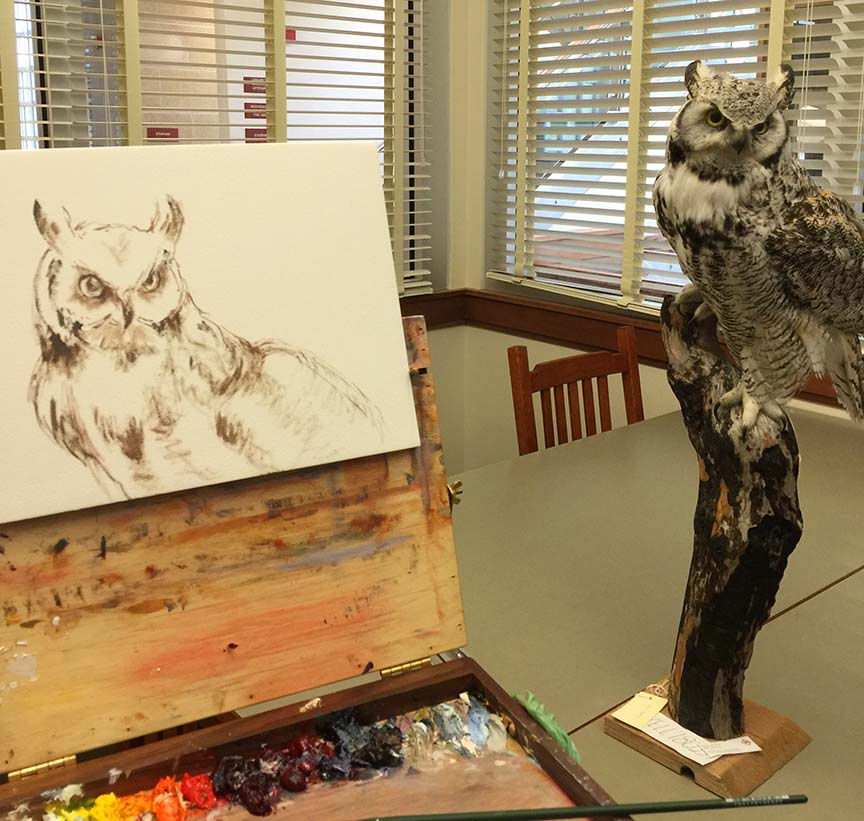It's Spring - and yes, I'm hooked on studying birds. How could you not, when you see the beauty and diversity among them! Owls are a particular favorite... but I might say that about them all:)
I found owls a particular challenge to capture in paint when I first attempted them many years ago. Their mottled coloring and form seemed hard for me to get just right. Now, I feel a little more adept with my years of practice...

Here, I start with a general outline - using slightly thinned oil paint and a small brush.
I consider this my "thinking stage", where I roughly layout the overall shapes and pattern... thinking through the painting to come....
- Composition: where do I want the owl placed on the page?... being sure that placement creates pleasing negative shapes
- Values or Lights and Darks: where are my lightest lights and my darkest darks?
- Color: looking for temperature changes, the warmer areas and the cooler spots that will add interest in the painting... taking note for later.
- Drawing / Overall forms: where does the body begin underneath the head? how does the wing sit on the body form? noticing the different shapes of the eyes with this slight 'turn of the head' pose, etc.
All that is going through my head as I block it in....

Now, I begin defining the pattern and form of the owl more and I get the all important eyes started. Mostly, I'm dealing with the darker areas with just a bit of my lightest lights in there as a "value gauge".
Next, I concentrate more on the middle values... being sure to play up those gorgeous subtle colorings I can see so well since I'm painting the owl from life... well, sort of :) About as close as it comes to painting wildlife 'from life'. A photo doesn't show me all that.
Finally, I make sure my lightest areas are correct and add a bit of thicker paint there for emphasis.

Great Horned Owl study by Shirl Ireland 9"x12" Oil on Arches Oil paper
